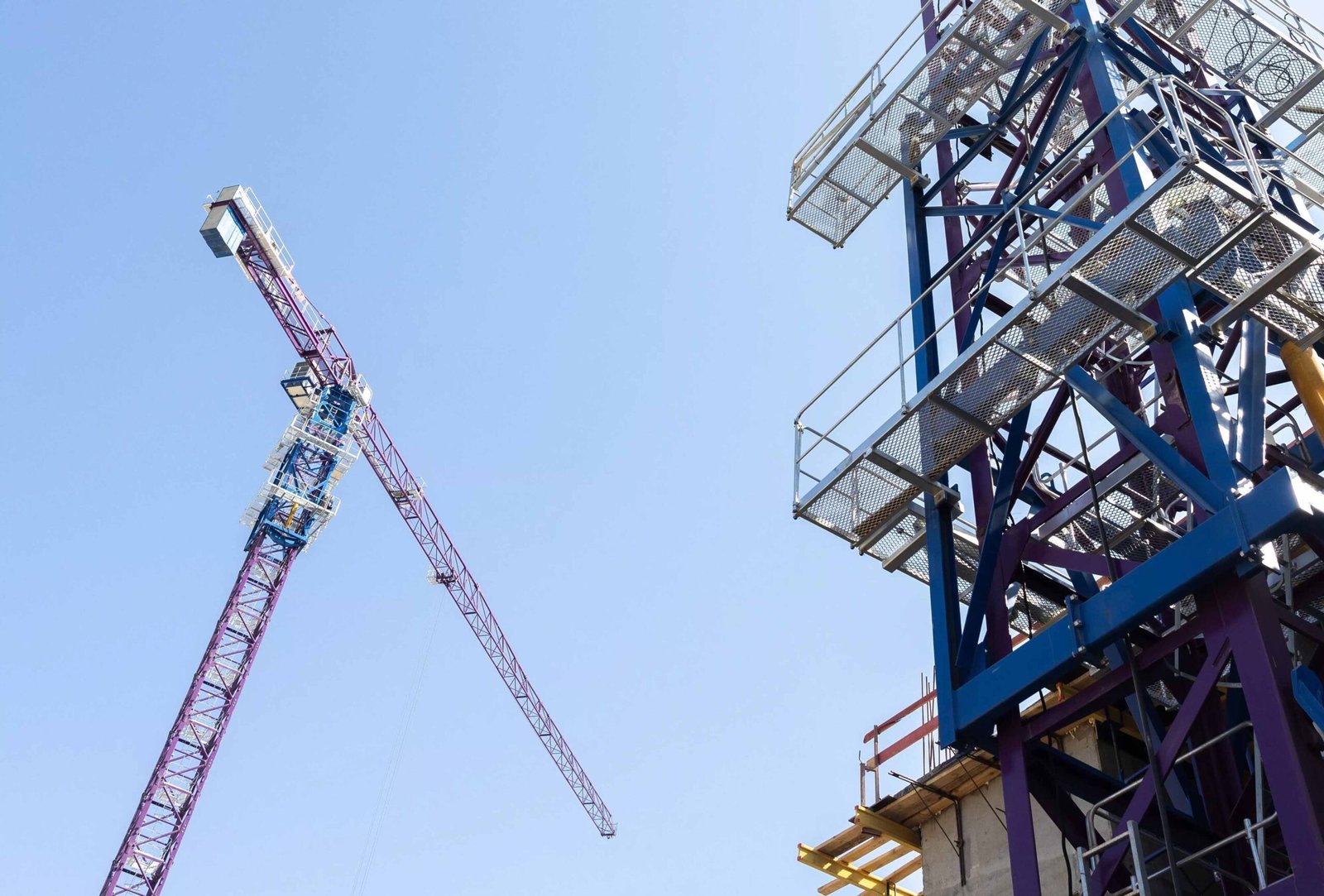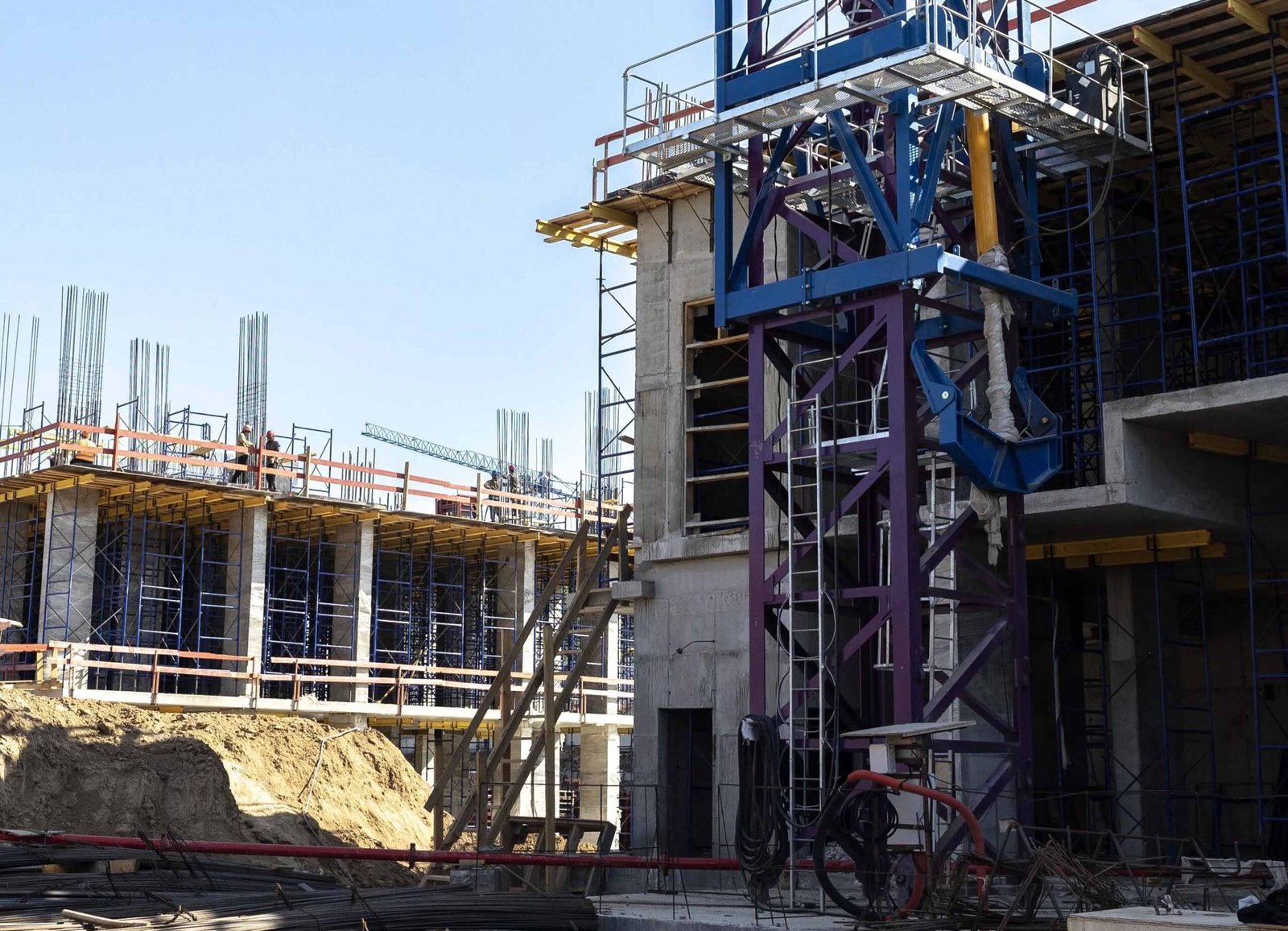
Large cranes are essential for constructing towering skyscrapers, bridges, and heavy infrastructure projects. But how do these massive machines move from place to place? The logistics behind moving a crane — whether it’s from one construction site to another or getting it down from a tall building — is an engineering challenge. In this article, we’ll explore how cranes are transported, dismantled, and how they remain stable during their operation.
Large cranes are carefully disassembled and transported using specialized equipment. The process includes securing parts and ensuring stability.
When it comes to large cranes, their movement isn’t as simple as driving them from one location to another. There are several steps involved, from disassembly to transport, to ensure that these giant machines arrive at their new site intact and ready to work. Let’s dive into the mechanics behind how cranes are moved and how they stay operational during and after transportation.
How Do They Get Cranes Down from Tall Buildings?

Taking down a crane from the top of a tall building can seem like an impossible task, but it’s a process that happens regularly on construction sites. So how do cranes get safely removed from the tops of buildings once they’ve completed their work?
Removing cranes from tall buildings involves dismantling the crane and using smaller cranes or hydraulic systems to lower parts down safely.
When the job is finished, the crane needs to be removed from the top of the building. This is typically done in stages. For tower cranes, the first step is to dismantle the jib1(the horizontal arm) and then break down the tower itself. Smaller cranes or even mobile cranes are then used to lower the crane's parts to the ground. In some cases, hydraulic systems or climbing cranes2 are used to safely lower the components piece by piece.
Steps for Dismantling Cranes:
- Jib Removal: The crane’s arm is taken off, often with a mobile crane.
- Tower Dismantling: The main body of the tower crane is broken down in stages.
- Transport: Once dismantled, the parts are moved to the ground.
| Step | Description | Equipment Used |
|---|---|---|
| Jib Removal | The horizontal arm is detached and lowered | Mobile cranes, hydraulic lifts |
| Tower Dismantling | The tower is taken apart piece by piece | Lifting cranes, dismantling tools |
| Transport | Parts are moved to ground level | Trucks, flatbeds |
How Much Can the Biggest Crane Move?

The biggest cranes are capable of moving massive loads, but how much can they really handle? These cranes are engineered to lift and transport incredibly heavy objects — but just how much weight are we talking about?
The largest cranes in the world can move loads weighing thousands of tons, with some capable of lifting up to 3,000 tons.
Cranes come in all sizes, and the largest ones, such as the Terex CC 8800-1 or the Liebherr LTM 11200, can move monumental loads. Some of the biggest cranes can lift up to 3,000 tons — the weight of a small building! These cranes are typically used in heavy construction or offshore oil rig installation. For comparison, the most powerful cranes on construction sites usually lift between 500 and 1,000 tons, depending on their design and purpose.
The Largest Crane Lifting Capacities:
- Standard Large Cranes: 500 - 1,000 tons.
- Mega Cranes: 1,500 - 3,000 tons.
| Crane Type | Maximum Lifting Capacity | Application |
|---|---|---|
| Standard Large Cranes | 500 - 1,000 tons | Large infrastructure projects |
| Mega Cranes | 1,500 - 3,000 tons | Offshore rigs, heavy industry |
What Happens to Skyscraper Cranes?

Once a skyscraper is completed, what happens to the tower crane that helped build it? Since these cranes are crucial during construction but are not needed afterward, their removal is an important part of the process.
After construction is complete, tower cranes are dismantled and removed from the building, often using smaller cranes.
Skyscraper cranes are typically dismantled once the building reaches its final height. The process involves first removing the crane's jib3 and counterweights, then using smaller cranes to dismantle the tower section by section. In some cases, a crane may have been designed with a "climbing" system, allowing it to "self-lift" during construction, which means it can also be dismantled piece by piece without additional cranes. After dismantling, the parts are transported off-site for reuse or recycling.
Steps for Removing Skyscraper Cranes:
- Counterweight and Jib Removal: The crane’s arm and weights are detached.
- Tower Dismantling: The main structure of the crane is taken down in sections.
- Transportation: The crane’s parts are moved to the ground.
| Step | Description | Equipment Used |
|---|---|---|
| Counterweight & Jib Removal | Crane arm and weights are taken off | Smaller cranes, hydraulic systems |
| Tower Dismantling | The crane’s main structure is dismantled | Lifting cranes, mobile cranes |
| Transport | Parts are moved from the top of the building to the ground | Trucks, flatbeds |
How Do Tower Cranes Stay Up?

Tower cranes are tall and massive, yet they remain upright throughout the construction process. How do these towering machines stay up without toppling over under the immense loads they lift?
Tower cranes stay upright through a combination of deep foundations, counterweights, and their unique design that balances the loads.
Tower cranes are built with deep foundations that anchor them securely to the ground. The crane's tower is often bolted into the foundation, and counterweights at the rear of the crane balance out the load being lifted. In addition, the crane’s design, with its long jib and short counter-jib, ensures that it remains stable. The combination of these factors prevents the crane from tipping over, even when lifting heavy materials high into the air.
How Tower Cranes Stay Upright:
- Deep Foundations: Secure the crane to the ground.
- Counterweights: Balance the crane by offsetting the weight.
- Balanced Design: The crane’s structure is engineered to provide stability.
| Stability Factor | Description | Purpose |
|---|---|---|
| Deep Foundations | Concrete bases or steel supports anchor the crane | To provide stability |
| Counterweights | Heavy weights placed at the back of the crane | To prevent tipping |
| Balanced Design | Special design of the crane ensures weight distribution | To maintain balance |
Can a Crane Travel with a Load?

One of the most impressive feats of a crane is its ability to lift and transport loads. But can a crane move with a load attached to it?
Cranes can travel with a load, but they do so very slowly and under strict safety conditions.
Yes, cranes can travel with a load, but it is not a common practice. When cranes need to move while carrying a load, it’s done very carefully. Specialized cranes called "crawler cranes4" or "mobile cranes[^5]" can travel with a load by moving at a slow speed. However, the load must be balanced and secured to prevent accidents. In some cases, loads are placed on special trailers and moved separately from the crane.
Moving Cranes with Loads:
- Crawler Cranes: These cranes can move with a load attached.
- Mobile Cranes: Capable of lifting and moving loads on-site.
- Transport Trailers: Used to move large, heavy loads.
| Crane Type | Can Travel with Load? | Speed and Conditions |
|---|---|---|
| Crawler Cranes | Yes | Slow, controlled movement |
| Mobile Cranes | Yes | Limited by load size, slow |
| Transport Trailers | Yes | Loads are moved separately |
Conclusion
Large cranes are essential for construction, but getting them to and from job sites requires careful planning and specialized equipment. From disassembling and moving cranes to ensuring their stability during operations, the process is complex and requires a combination of engineering expertise and logistics. Cranes stay upright through deep foundations, counterweights, and their balanced designs, ensuring they can perform their duties safely and effectively.
-
Learn about the important role the jib plays in crane operations and dismantling. ↩
-
Understand how climbing cranes are used to safely remove parts from tall buildings. ↩
-
Find out why crawler cranes are preferred for moving with loads in construction. ↩
-
Learn how mobile cranes facilitate the lifting and moving of loads on construction sites. ↩






